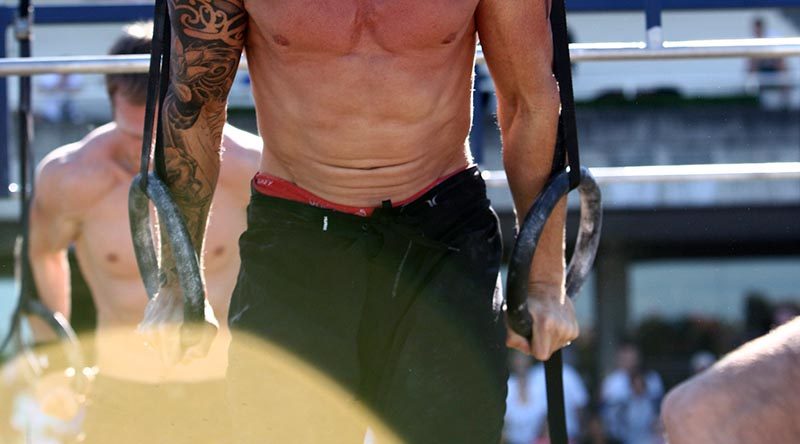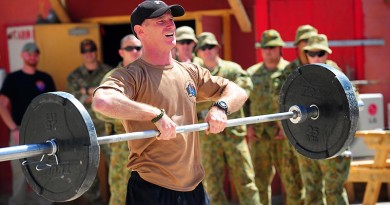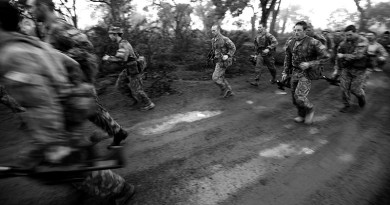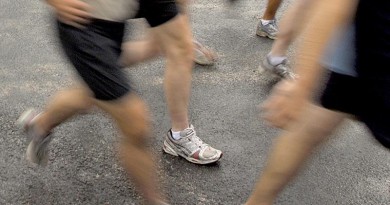Military Fitness – Part 18

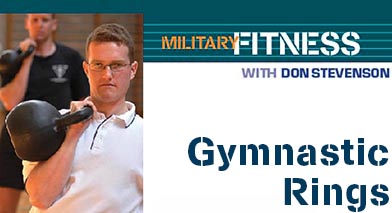
Looking for a way to add extra challenge and variety to your training? Then look no further than a set of portable gymnastic rings.
Aside from kettlebells, a set of rings is easily one of the most versatile, portable and cost-effective tools available for military fitness.
In this article we’ll look at some of the benefits of ring training and briefly examine some of the best drills for military personnel to perform on the rings.
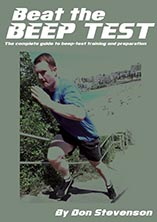 Beat The Beep Test by Don Stevenson is an 89-page complete guide to beep-test training and preparation.
Beat The Beep Test by Don Stevenson is an 89-page complete guide to beep-test training and preparation.
20% of proceeds from the sale of this e-book will be donated to Soldier On
Benefits of rings
There are a number of significant benefits that rings offer to military fitness programs.
Versatility – A single set of rings can be mounted at a huge variety of heights and angles to not only allow a huge number of excellent exercises but also to vary the difficulty without the need for extra weights. Rings can be used to develop extreme levels of strength and muscle mass from the tip of the fingers to the hips. Pair them with heavy kettlebells for the lower body and you won’t need anything else.
Portability – A set of rings weighs about a kilo and only takes up as much space in a bag or vehicle as a single ration pack. Rings can be hung over tree branches, beams or off vehicles and can be set up and taken down in seconds.
Functional training – Rings can be used to strengthen all of the major pulling and pushing movement patterns of the upper body as well as extreme levels of core strength. The instability inherent in rings forces the stabilisers in the core and shoulders to work overtime, and the unrestricted range of motion means no joint problems from unnatural machine movements. Progressions for all exercises are available to allow for all levels of tactical athlete from beginner to SF mutant.
Exercises
Let’s look at some basic ring exercises that you can add to your program straight away.
Ring stability – Set up the rings low to the ground and assume the top position of a pushup. Slowly push your hands away from your body until you feel tension in the core. Hold this position for five to 30 seconds. Progress the movement by extending your reach until you are in a full ‘superman’ position.
Ring pushup – Set up the rings at shoulder width apart about 20cm from the ground (higher for beginners) and perform regular pushups. You’ll notice the huge increase in stabiliser activity in the core and shoulders. Progress this movement by allowing the rings to drift out to the sides more, or by elevating the feet.
Ring dip – Lots of people can bang out 20+ parallel bar dips but ask any of those people to do them on rings and they are often stopped within a handful of reps. Set up the rings hanging from a chinup bar (watch your head clearance!) then hop from the ground into a fully extended support position with the chest up and arms straight down by the sides holding the rings in close to the body. Once you can hold that position for a solid 10 seconds without flopping around like a hooked fish you can attempt a dip. Initially you may need to get a spot to assist, or lower the rings and self spot with your feet.
Ring L-sit – If you can hold in support and do a dip or two try the L-sit. Simply hold in support and then extend the legs straight out until they are parallel to the ground. If that proves too difficult, bring the knees up into a tuck and extend one leg at a time. Warning; you may need to ice your abs the next day!
Ring pull-ups – Rings allow for a full range of motion with pull-ups. You can alternate overgrasp, undergrasp and neutral grip without even letting go of the rings and you can modify the width with a flick of the straps. Rings are great for hanging off trees and other uneven supports as you can adjust the length of each strap to level them. For an extra challenge, Google “false grip” and start working toward the gold standard of ring training – the muscle up.
Muscle up – The muscle up is a chinup into full support on the rings. In order to achieve this you need to be able to do a significant number of both dips and chinups on the rings (about 15 of each) plus master the timing of transitioning from the top of the pull up into the bottom of the dip. The good news is that if you put in the time to achieve this feat then scaling walls is a cinch and people will marvel at your spiderman-like skills on the obs course.
Conclusion
Hopefully that’s given you some ideas of things to add to your program, I suggest starting out slowly and adding one exercise every few weeks as you gain strength and confidence.
For video demonstrations of all these exercises jump on to my website www.octogenstrengthcoach.com
.
.
.
.

.
.

